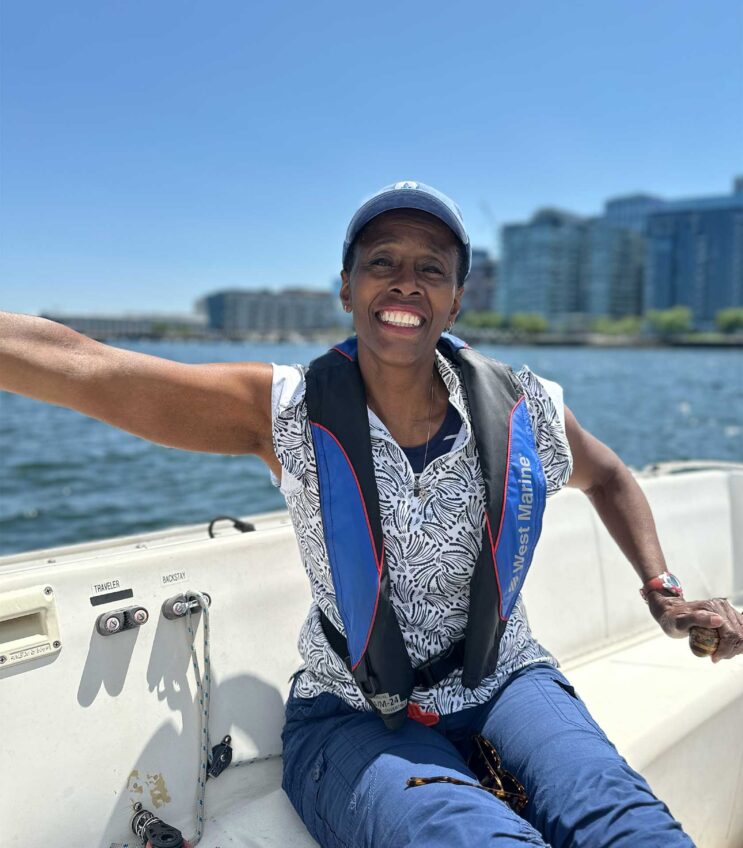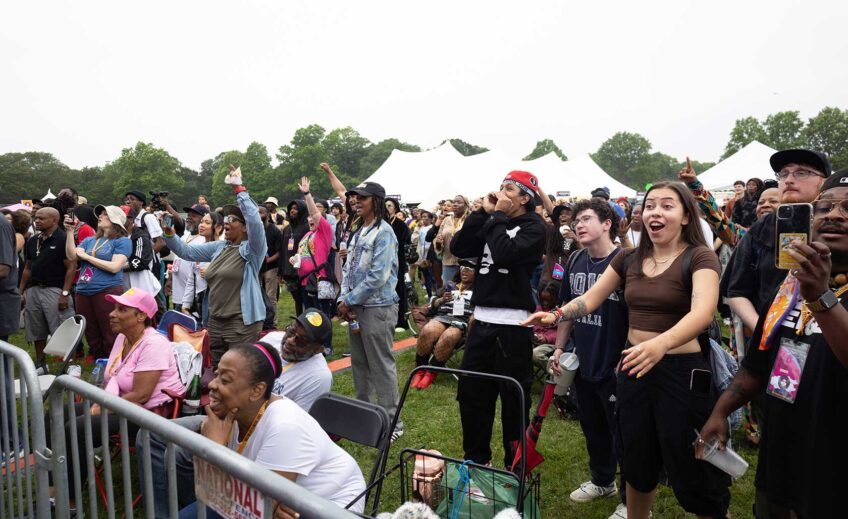
Most days within the past three months, Beata Coloyan was on the Charles River by 5:30 a.m. From August to mid-October she spent these early morning hours training for the Head of the Charles regatta. At 7:30 am, she would leave for work as the Schools Partnership manager for Families for Excellent Schools. By 3 p.m., she was back at the Charles to coach Boston Latin School’s girls’ varsity team. Three hours later she returned to working, typically from home.
Coloyan was captain of the crew team during her last year of high school at Boston Latin School. When she graduated from Boston University, she returned to BLS to coach. At 23, Coloyan is one of the youngest head coaches in the state, she said.
Coloyan spoke with the Banner as the varsity team prepared for their last race of the fall season, a state-wide championship.
The ultimate sport
Coloyan became hooked on rowing when she was 14. Choosing the sport was more chance than anything — her friend was on the school’s team — but once she joined, Coloyan discovered she loved it.
“It’s the ultimate team sport,” Coloyan said, “You’re a part of a team where there’s no MVP. In nearly every team, you know who’s best. In crew, you are as strong as your weakest player. You work to make everyone around you better.”
BLS’ team was four years old when Coloyan joined. When she graduated, she continued rowing at BU where she met Kerry Kennedy, now her assistant coach. Coloyan volunteered with the BLS team throughout college. Three months after graduating BU, she became her high school’s varsity head coach.

Boston Latin School’s varsity girls team trained on the Charles River days before a state-wide championship.
Crew culture
Being on crew — especially a team as competitive as BLS’ varsity — is demanding, said Coloyan. In spring, they practice six days a week for three hours at a time. In fall, the most competitive students meet five days a week, the others three days. This is meant to allow time for college applications.
To help students manage an intense training schedule, coaches seek to be responsive to students’ needs.
In the middle of one season, several students reported trouble balancing crew with schoolwork. The solution the coaches discovered: The youths needed time in the day to themselves to think and clear their minds, said Coloyan. Every practice now starts with two minutes of quiet.
One factor that may help students feel comfortable raising issues: Kennedy and Coloyan say they work to create a culture of trust and respect.
“We’re very big with respect and trust on our team,” Coloyan said.
The first day of practice always includes a discussion of team values. Students sign a contract that outlines what they can expect from coaches and what, in return, is expected from them.
Big sisters
Being young also helps Coloyan and Kennedy connect with the girls. When they first started coaching last year, Kennedy, also 23, said other coaches often mistook them for student rowers.
“An advantage to a very young coaching staff is we are [students’] coaches, but also feel like their big sisters,” Coloyan said.
That role extends past rowing. Coloyan said the BLS coaches talk to the students about their own experiences applying for college and that she is still in touch with past team members who now are college freshmen.
Peer mentors
Equally important is trust among teammates. There are only five students in a boat and when on the water they must rely on each other for success and safety.
Coloyan and Kennedy follow the students in a motor boat during practices and call advice and warnings. But on race days, the students are on their own.
“The most terrifying and most wonderful feeling is when the crew goes out on race day,” said Coloyan. There’s no half-time where they can give instructions and no coaching from the sidelines. “From the second you let them go until they come back, they’re out of your hands.”
As the one who calls out directions, the coxswain bears responsibility both for directing the boat to their goal and avoiding collisions. Many fast college teams share the Charles with BLS, creating a need to be alert throughout practice.
“One young person is in charge of five people’s lives,” explained Coloyan.
Trust on a boat, then, is critical.
Socially, a coxswain’s job can be challenge, especially if she is younger than the rowers she is directing. The coaches push experienced coxswains to take newer ones under their wings and advise on tips ranging from steering skills to earning peers’ respect.
Drawing from their college experience, Coloyan and Kennedy introduced all their students — coxswains and rowers — to a “big-little” system in use at BU. The coaches formally pair first- and second-year students with upperclass mentors, carefully matching personalities and temperaments.
One lesson Coloyan says she has learned: the importance of letting students see the results of their actions and learn from them.
“The best crew coaches don’t talk too much,” she said.






